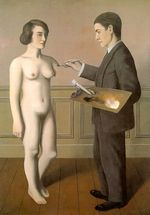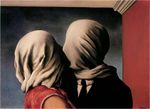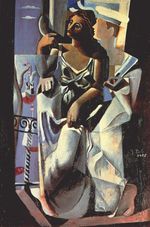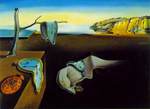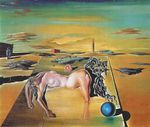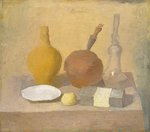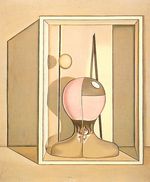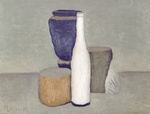
|
Featured Artist at the e.Gallery this week is a 20th Century artist of the Surrealist movement, René François Ghislain Magritte [Belgian, 1898-1967] Link: https://fineart.elib.com/fineart.php?dir=Alphabetical/Magritte_Rene
René Magritte (1898–1967) was born in Lessines, Hainaut, Belgium. Aside from a few facts, almost nothing is known of Magritte’s childhood. We know that the family’s financial status was comfortable because Léopold, ostensibly a tailor, made handsome profits from his investments in edible oils and bouillon cubes.
We also know that young René sketched and painted early on, and began taking formal lessons in drawing in 1910 — the same year that he produced his first oil painting. Anecdotally, he was said to be a lackluster student in school. The artist himself had little to say about his childhood beyond a few vivid memories that shaped his way of seeing.
Perhaps this relative silence about his early life was born when his mother committed suicide in 1912. Régina had been suffering from depression for an undocumented number of years, and was so badly affected that she was usually kept in a locked room. On the night she escaped, she immediately went to the nearest bridge and threw herself into the River Sambre that flowed behind the Magritte’s property. Régina was missing for days before her body was discovered a mile or so downriver.
Legend has it that Régina’s nightgown had wrapped itself around her head by the time her corpse was recovered, and an acquaintance of René’s later started the story that he was present when his mother was pulled from the river. He was certainly not there. The only public comment he ever made on the subject was that he’d felt guiltily happy to be the focal point of sensation and sympathy, both at school and in his neighborhood. However, veils, curtains, faceless people, and headless faces and torsos did become recurring themes in his paintings.
In 1916 Magritte enrolled in the Academie des Beaux-Arts in Brussels seeking inspiration and a safe distance from the WWI German invasion. He found none of the former but one of his classmates at the Academie introduced him to Cubism, Futurism, and Purism, three movements he found exciting. On a less visionary note, he emerged from the Academie qualified to do commercial art. Although creating ads and designs can be boring, it is steady work. Commercial jobs kept Magritte’s bills paid until, decades into the future, he was able to paint “seriously” full time. agritte died on August 15, 1967 in Schaerbeek, Brussels, Belgium.
|







